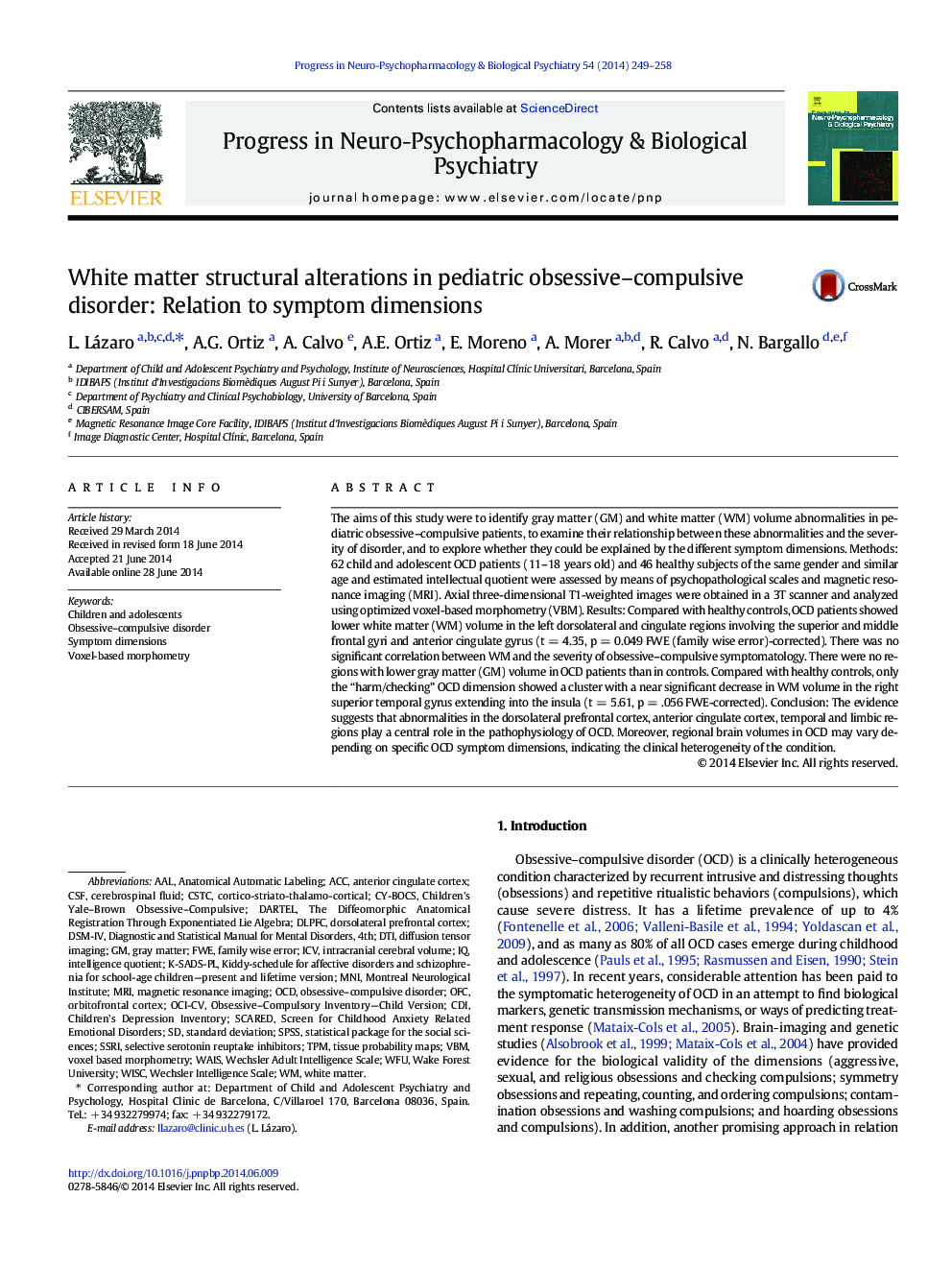| Article ID | Journal | Published Year | Pages | File Type |
|---|---|---|---|---|
| 5844339 | Progress in Neuro-Psychopharmacology and Biological Psychiatry | 2014 | 10 Pages |
â¢OCD patients have smaller WM volume in dorsolateral prefrontal and cingulate cortices.â¢Harm/checking patients show a trend towards a smaller WM volume in the temporal gyrus.
The aims of this study were to identify gray matter (GM) and white matter (WM) volume abnormalities in pediatric obsessive-compulsive patients, to examine their relationship between these abnormalities and the severity of disorder, and to explore whether they could be explained by the different symptom dimensions. Methods: 62 child and adolescent OCD patients (11-18 years old) and 46 healthy subjects of the same gender and similar age and estimated intellectual quotient were assessed by means of psychopathological scales and magnetic resonance imaging (MRI). Axial three-dimensional T1-weighted images were obtained in a 3T scanner and analyzed using optimized voxel-based morphometry (VBM). Results: Compared with healthy controls, OCD patients showed lower white matter (WM) volume in the left dorsolateral and cingulate regions involving the superior and middle frontal gyri and anterior cingulate gyrus (t = 4.35, p = 0.049 FWE (family wise error)-corrected). There was no significant correlation between WM and the severity of obsessive-compulsive symptomatology. There were no regions with lower gray matter (GM) volume in OCD patients than in controls. Compared with healthy controls, only the “harm/checking” OCD dimension showed a cluster with a near significant decrease in WM volume in the right superior temporal gyrus extending into the insula (t = 5.61, p = .056 FWE-corrected). Conclusion: The evidence suggests that abnormalities in the dorsolateral prefrontal cortex, anterior cingulate cortex, temporal and limbic regions play a central role in the pathophysiology of OCD. Moreover, regional brain volumes in OCD may vary depending on specific OCD symptom dimensions, indicating the clinical heterogeneity of the condition.
